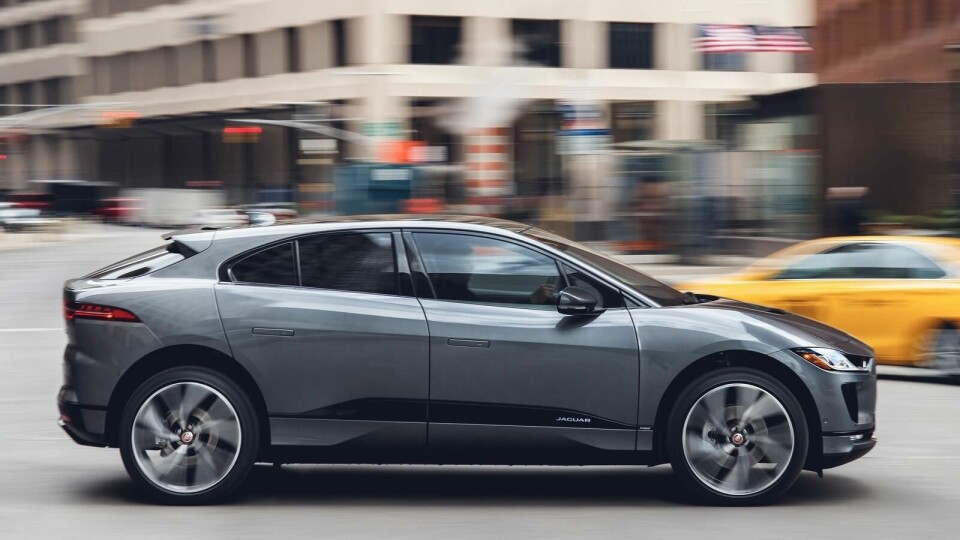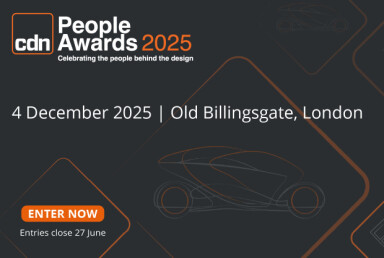Autonomous vehicles
Simple, spacious, software driven: the design of self-driving prototypes

For all the excitement around the opportunities of autonomous driving, progress is being led by objectively bland cars – for now
Autonomous cars have been tested on public roads en masse for well over a decade at this point. In the US, key proving grounds can be found in Florida, Nevada and California among others, while numerous European cities have also opened the door to driverless car testing with or without a pilot on board. Progress in southeast Asia has been startling, led by China and Singapore but also Japan and South Korea. The days of being able to name a select few markets or even cities have long gone.
There is a universal trend regardless of location: virtually every prototype is a modified version of your typical family sedan, crossover or SUV. Most vehicles seem to be electric or hybrid, with steering, braking and acceleration electronically controlled already, no doubt simplifying the modification process. Almost all feature prominent external sensor suites – big stacks of equipment visible on the roof and sides of the car – which despite becoming more streamlined over the years are still fairly conspicuous. Beyond that, almost all of them are plain white, often with some arty graphics to promote the company’s brand.
The future of weird and wonderful robotaxi design is not here just yet. Simple, spacious and software-driven would be a reasonable summary for most AV test cars right now. Note that this article does not count anything below Level 4 autonomous driving as a self-driving car: however advanced modern highway pilot features have become, they still require a human behind the wheel. Read on for a non-exhaustive list of some key platforms being built on by major players.
Chrysler Pacifica
The family minivan has been a popular choice for various players, most prominently Waymo which used the Pacifica for its test fleet between 2016 and 2023 before switching to the Jaguar I-Pace. Sliding doors and plenty of cabin space make sense for robotaxi testing, not to mention the physical room to store all that additional self-driving hardware. AutoX has also used the Pacifica for those same reasons. It should also be recognised that this is an inoffensive, friendly-looking minivan that puts ‘riders’ at ease as it approaches.
Lexus RX450H
Another exceptionally popular choice for much the same reasons as the Pacifica. The hybrid SUV is perhaps more of a conventional ‘car’ without the sliding doors and offers a slightly more premium base product to work with. Apple, Pony.AI and Waymo have all used the RX450H as their AV prototype mules, and typically using earlier generation models. Note again that this is a fairly large vehicle with ample room to store self-driving computers and cabling.
Toyota Sienna
The Sienna is a close competitor to the Pacifica and has found its place as an autonomous test mule for good reason. May Mobility, Pony.AI and Lyft have all put the Sienna to work. As a minivan it naturally offers plenty of room to play with and can be modified as a ramp-accessible vehicle to the rear. Sensor sets (camera, lidar, radar, infrared) are generally left in plain view on the roof and front quarter panel.
Jaguar I-Pace
Now Waymo’s favoured prototype platform, the Jaguar I-Pace offers space, a premium touch and importantly an electric powertrain. It is not a like for like substitute: the I-Pace is smaller on all counts but not drastically so. Waymo describes it as “a sleek and graceful car” that will provide “a safe and delightful experience for our passengers. Its size makes it ideal for city driving. Its big, fast-charge battery means it can drive all day, which is perfect for our self-driving service.” In May this year, contract manufacturer Magna opened a new plant near Phoenix that will convert standard I-Pace’s into Waymo robotaxis.
Chevrolet Bolt
General Motors’ autonomous driving division Cruise has used the Bolt as a test vehicle from the beginning. It is one of the smaller test vehicles in play, perhaps to make navigating busy San Francisco streets a little less challenging. Cruise has also been developing its own bespoke concept, the Origin, although progress on that is unclear.

Honda Accord
The unassuming sedan has been used by AutoX, which has offices in the US and China. Like virtually everything else on the list, it can be seen in gloss white, sporting understated AutoX blue and green branding toward the rear. Boasts one of the most substantial roof-mounted sensor suites we’ve seen.
Nio ES8
Mobileye, owned by Intel, has been using the electric full-size SUV for its testing in Germany and Detroit most recently. It features a huge roof-mounted sensor set, beefed up front bumper with added sensors, and sensors on the front and rear quarter panels. Small cameras can also be spied on the wing mirrors. Can you guess what the CMF theme is for these robotaxi prototypes?
Ford Escape and Fusion
Used most prominently by Argo AI but also Ford itself, both the Escape and Fusion offer a similar platform to nearly everything else on this list. They are standard, easily procured family vehicles that offer a blank canvas to work with. The Escape is naturally a little larger and – from a fundamental drivability perspective – better equipped for extreme weather testing, which is very much an active process to ensure robotaxis can operate in snow, heavy rain, fog and ice.
Volkswagen ID. Buzz
The ID. Buzz is one of the more contemporary, dare we say futuristic, vehicles being used as an autonomous prototype right now. Like the minivans that have been used for most of the past decade, this electric people carrier offers plenty of room thanks to short overhangs front and rear, a flat floor with no drivetrain tunnel, and an approachable design that creates a good first impression with riders. Uber has used the electric minivan as a test mule, and through a joint collaboration with Ford and Volkswagen, Argo.AI has done the same.
IM Motors IM6
The IM6 is an electric sedan that sits at just under five metres in length but with a sizeable 2950mm wheelbase. That makes for a spacious cabin – which is important, remember – and is built on the brand’s “Digital Chassis”. In essence, the vehicle’s core driving dynamics – handling, braking, acceleration etc. – are handled electronically and managed by software.
AV company Momenta has been using the IM6 sedan as a test vehicle with a discrete roof-mounted sensor set but also a fairly primitive device that is plonked on the rear spoiler. Like other more contemporary models, it is already fitted with various sensors and software to support advanced driver assistance systems (ADAS) which underpin the basics of autonomous driving.
Hyundai Ioniq 5
The Ioniq 5 is a reasonable alternative to the Jaguar I-Pace in that both are electric with roughly three-metre wheelbases. The Hyundai is a fraction shorter, but also marginally taller. Motional, a partnership between Aptiv and Hyundai Motor Group, has been using the Ioniq 5 for its fleet with enormous sensors on the roof and body sides, all mounted in the usual spots for panoramic detection. Think of it as peripheral vision, but with no blind spots. Motional’s LiDAR scanners sport a fetching blue colour – there is a hint of ‘police car’ about it. Waymo has also brought the Ioniq 5 into the fold.
Toyota Highlander
Almost a direct alternative to the Lexus RX450H, this hybrid SUV has been used by Zoox while it continues to develop its own purpose-built robotaxi. It is a little larger than the Lexus on all counts.

Others
Other early test cars included the Renault Zoe, Nissan Leaf and Toyota Prius by various firms, including Google before it launched Waymo. Uber had used Volvo XC90s for the brief period that it led its own independent test programme. Tesla has used all of its models, primarily the Model 3, and teased the Cybercab in 2024. Nuro has earmarked the Lucid Gravity as a test prototype and will be supported by Uber’s ride-hailing platform. Numerous Chinese brands including Jiangling Motors have found themselves supplying AV companies. It is also worth flagging Waymo’s collaboration with Zeekr, which is based on the Mix minivan.

What we can say from all of this is that developers are largely brand agnostic and simply want something spacious, easily modified for advanced software and computing, and ideally with a simple, universally acceptable design. AV companies are going with what is homologated for the road at this point, so it is difficult to say for sure where 'design' falls into the equation. They are arguably most focussed on creating cars that do not crash or get stuck in awkward situations. Aesthetic themes will likely emerge as purpose-built prototypes begin hitting the road in force.





































